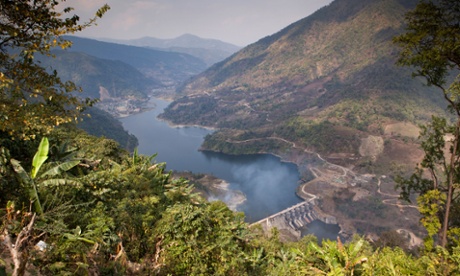By Adam Halliday
Aizawl, Oct 30 : In spite of suffering its two worst electoral defeats in the past decade, there seems unlikely to be any change in the Mizo National Front leadership as the party heads for internal elections next month.
The party that ruled Mizoram for two consecutive terms between 1998 and 2008 was decimated in the 2008 state-wide elections and reduced to occupying just three of the assembly’s 40 seats. It slightly improved its tally in 2013 and won five seats.
Nevertheless, the main opposition party’s top five leaders have once again been nominated uncontested for the exact same posts they have been occupying by the party’s National Executive Meeting on Thursday at Aizawl.
Significantly, both Zoramthanga and Tawnluia were re-nominated without any contestants for the post of President and Senior Vice President respectively.
In a way, the uncontested nominations show the party’s continued deference for leaders who once spent two decades as guerilla fighters in a bid to win an independent country for Mizos in India, Bangladesh and Myanmar.
The other three leaders re-nominated on Thursday were not part of the MNF uprising, as it is often called, a period that saw an entire division of the Indian Army (assisted in the beginning by the IAF) move into present-day Mizoram to subjugate the separatist movement.
The re-nominations also shows the unchanged leadership preference of most senior party workers in spite of staring at the prospect of spending a decade out of power.
Of the top five, only one (former MP Vanlalzawma) is currently an MLA. he has been re-nominated to be Treasurer.
Three others — former CM Zoramthanga, former Home Minister Tawnluia and former Health Minister R Tlanghmingthanga — have lost two consecutive elections.
A fifth (former Education Minister Dr R Lalthangliana) lost, albeit by a margin of less than a hundred votes, to a first-time Congress candidate in last year’s assembly polls. He has been renominated as one of the two Vice Presidents, along with R Tlanghmingthanga.
Although it will remain open for other party leaders to contest against any of these five leaders before party elections take place on November 14, it appears unlikely that will be the case.
Insiders said a move to introduce the secret ballot system in the party polls was shot down after prolonged debate at Thursday’s meeting, meaning the mid-November elections will be decided by a show of hands once again.
Aizawl, Oct 30 : In spite of suffering its two worst electoral defeats in the past decade, there seems unlikely to be any change in the Mizo National Front leadership as the party heads for internal elections next month.
The party that ruled Mizoram for two consecutive terms between 1998 and 2008 was decimated in the 2008 state-wide elections and reduced to occupying just three of the assembly’s 40 seats. It slightly improved its tally in 2013 and won five seats.
Nevertheless, the main opposition party’s top five leaders have once again been nominated uncontested for the exact same posts they have been occupying by the party’s National Executive Meeting on Thursday at Aizawl.
Significantly, both Zoramthanga and Tawnluia were re-nominated without any contestants for the post of President and Senior Vice President respectively.
In a way, the uncontested nominations show the party’s continued deference for leaders who once spent two decades as guerilla fighters in a bid to win an independent country for Mizos in India, Bangladesh and Myanmar.
The other three leaders re-nominated on Thursday were not part of the MNF uprising, as it is often called, a period that saw an entire division of the Indian Army (assisted in the beginning by the IAF) move into present-day Mizoram to subjugate the separatist movement.
The re-nominations also shows the unchanged leadership preference of most senior party workers in spite of staring at the prospect of spending a decade out of power.
Of the top five, only one (former MP Vanlalzawma) is currently an MLA. he has been re-nominated to be Treasurer.
Three others — former CM Zoramthanga, former Home Minister Tawnluia and former Health Minister R Tlanghmingthanga — have lost two consecutive elections.
A fifth (former Education Minister Dr R Lalthangliana) lost, albeit by a margin of less than a hundred votes, to a first-time Congress candidate in last year’s assembly polls. He has been renominated as one of the two Vice Presidents, along with R Tlanghmingthanga.
Although it will remain open for other party leaders to contest against any of these five leaders before party elections take place on November 14, it appears unlikely that will be the case.
Insiders said a move to introduce the secret ballot system in the party polls was shot down after prolonged debate at Thursday’s meeting, meaning the mid-November elections will be decided by a show of hands once again.







 The government has to create educational and employment avenues in the northeastern states.
The government has to create educational and employment avenues in the northeastern states.





